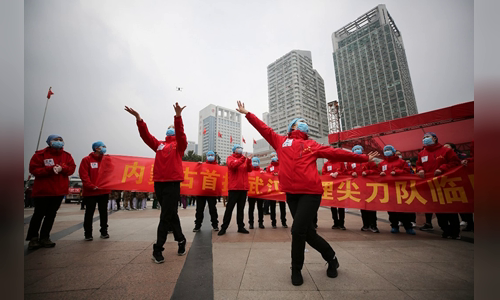The Hubei government allowed public transport workers and some Wuhan industries to return to work after nearly two months of blockade.
The Hubei provincial government today announced on its website that public transport officials in Wuhan, workers involved in manufacturing medical supplies and daily-life appliances, will be allowed to return to work. Other industries that affect national or global supply chains may also function again with permission from the relevant authority.

Health workers celebrate all patients being discharged from a field hospital in Wuhan City on March 9 Photo: AFP
On the same day, Japanese automaker Nissan said it had planned to resume production at two factories in China, one of which was in Hubei. Honda also said some employees have returned to work at the factory in Wuhan and will gradually resume operations from today.
Throughout China, manufacturing is also on track to return to normal. Many localities are also lowering disease warning levels and easing travel restrictions. However, the Hubei government said the travel ban in Wuhan was still maintained and schools in the province would continue to close until further notice.
Wuhan produces nearly 10% of cars in China and is home to hundreds of auto parts suppliers. The city of 11 million people was frozen in late January after the outbreak of Covid-19.
During his first visit to the Wuhan epidemic yesterday, President Xi Jinping praised the government and its people for "reversing" Covid-19, effectively controlling the spread of the disease. Data released by China's National Health Commission today recorded 24 new infections of nCoV and 22 deaths, all in Wuhan. Compared to a month ago, the number of infections has dropped sharply.
The rate of infection in the community in China has decreased, as 10 of the 24 new infections today are people from abroad. Chinese officials are shifting their focus to controlling risks from imported nCoVs.
Beijing capital today recorded six new cases involving individuals from Italy and the United States, while Shanghai also had two cases of foreign imports, both in Shandong and Jiangsu provinces.
Currently the number of nCoV infections in China is nearly 81,000, of which more than 3,100 have died and more than 61,000 have recovered. About three-quarters of the country's provinces have lowered their emergency response to Covid-19.



 KamalKumarRajak
KamalKumarRajak







